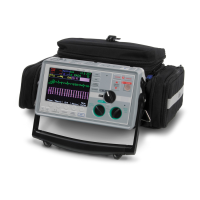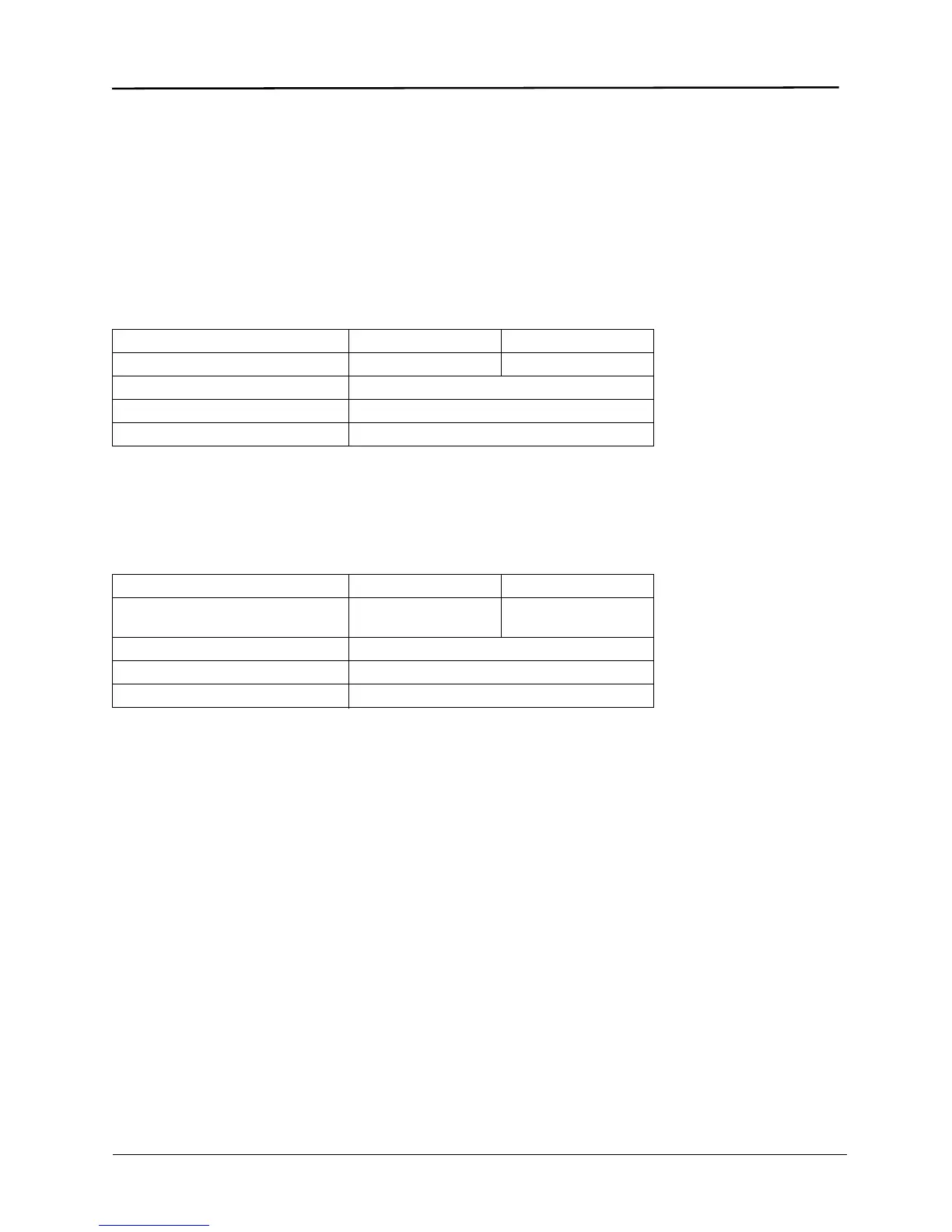E Series Operator’s Guide
A-22 9650-1210-01 Rev. R
300, 360 J). A significance level of p=0.05 or less was considered statistically significant using Fischer’s Exact test.
Also, differences between the two waveforms were considered statistically significant when the customary 95% or AHA
recommended 90%* confidence interval between the two waveforms was greater than 0%.
Results: The study population of 184 patients had a mean age of 63 ±14 years. 143 patients were males. 98 patients
were in the biphasic group (ventricular fibrillation/flutter, n=80; ventricular tachycardia, n=18) and 86 patients were in
the monophasic group (ventricular fibrillation/flutter, n=76; ventricular tachycardia, n=10). There were no adverse
events or injuries related to the study.
The first shock, first induction efficacy of biphasic shocks at 120 J was 99% versus 93% for monophasic shocks at 200
J (p=0.0517, 95% confidence interval of the difference of -2.7% to 16.5% and 90% confidence interval of the difference
of -1.01% to 15.3%).
Successful defibrillation with rectilinear biphasic shocks was achieved with 58% less delivered current than with
monophasic shocks (14 ±1 vs. 33 ±7 A, p=0.0001).
The difference in efficacy between the rectilinear biphasic and the monophasic shocks was greater in patients with
high transthoracic impedance (greater than 90 ohms). The first shock, first induction efficacy of biphasic shocks was
100% versus 63% for monophasic shocks for patients with high impedance (p=0.02, 95% confidence interval of the
difference of -0.021% to 0.759% and 90% confidence interval of the difference of 0.037% to 0.706%).
A single patient required a second biphasic shock at 150 J to achieve 100% defibrillation efficacy versus six patients
for whom shocks of up to 360 J were required for 100% total defibrillation efficacy.
Conclusion: The data demonstrate the equivalent efficacy of low energy rectilinear biphasic shocks compared to
standard high energy monophasic shocks for transthoracic defibrillation for all patients at the 95% confidence level.
The data also demonstrate the superior efficacy of low energy rectilinear biphasic shocks compared to standard high
energy monophasic shocks in patients with high transthoracic impedance at the 90% confidence level. There were no
unsafe outcomes or adverse events due to the use of the rectilinear biphasic waveform.
Randomized Multi-Center Clinical Trial for Cardioversion of Atrial Fibrillation (AF)
Overview: The defibrillation efficacy of ZOLL's Rectilinear Biphasic waveform was compared to a monophasic
damped sine waveform in a prospective randomized multi-center study of patients undergoing cardioversion of their
atrial fibrillation. A total of 173 patients entered the study. Seven (7) patients who did not satisfy all protocol criteria
were excluded from the analysis. ZOLL disposable gel electrodes with surface areas of 78 cm
2
(anterior) and 113 cm
2
(posterior) were used exclusively for the study.
Objective: The primary goal of the study was to compare the total efficacy of four consecutive rectilinear biphasic
shocks (70 J, 120 J, 150 J, 170 J) with four consecutive monophasic shocks (100 J, 200 J, 300 J, 360 J). The
significance of the multiple shocks efficacy was tested statistically via two procedures, the Mantel-Haenszel statistic
and the log-rank test, significance level of p=0.05 or less was considered statistically significant. The data are
completely analogous to the comparison of two survival curves using a life-table approach where shock number plays
the role of time.
The secondary goal was to compare the first shock success of rectilinear biphasic and monophasic waveforms. A
significance level of p=0.05 or less was considered statistically significant using Fisher Exact tests. Also, differences
Monophasic Biphasic
1st Shock Efficacy 93% 99%
p-value 0.0517
95% Confidence Interval -2.7% to 16.5%
90% Confidence Interval -1.01% to 15.3%
Monophasic Biphasic
1st Shock Efficacy
(high impedance patients)
63% 100%
p-value 0.02
95% Confidence Interval -0.021% to 0.759%
90% Confidence Interval 0.037% to 0.706%

